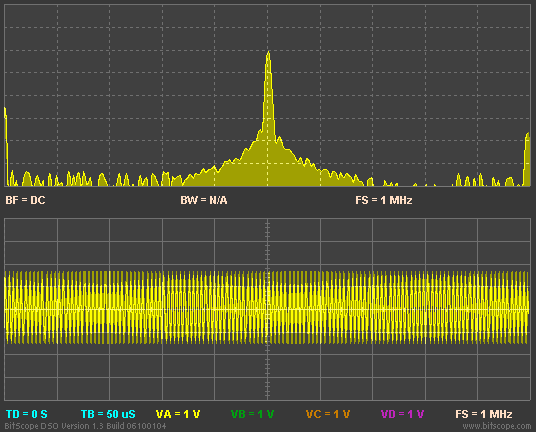

This display export shows a carrier signal with increasing levels of FM modulation. The file that was used to create this example is called fm.csv in the Offline Examples. For details about how to play this on your own PC, read the Sydney BitScope page.
(Re)power the DSO, load this file and what you see is the waveform as shown above. To enable the spectrum analyzer split screen with the waveform display as shown above, select the Wave Spectrum display selector. Simple. But there's more to this signal than meets the eye.
Looking carefully at the right edge of the spectrum display when the modulation is low there's something visible. What is it?
Select the Dot/Vector Display Mode by clicking the word SHARP.
Now the spectrum bandwidth is doubled and the first and second harmonics of the carrier are visible. They too can now be seen to be subject to the increasing modulation but in the case of the second harmonic, twice as much, and the third, three times as much.
Click off REPEAT (to stop the replay) and click TRACE to step one frame forward at time. Try increasing the timebase zoom to x10 (click the zoom parameter) and then scroll through the waveform with the waveform offset.
It's now possible to see "FM" in action. As you scroll you can see the carrier frequency move high and low (presuming you've stopped the replay at a frame with significant levels of modulation).
Visit the next page (Video Signal) to see a more complex example (a changing video field).